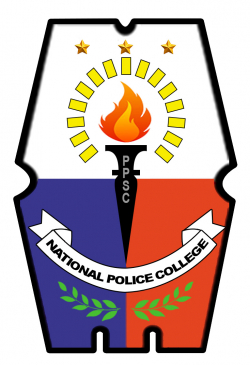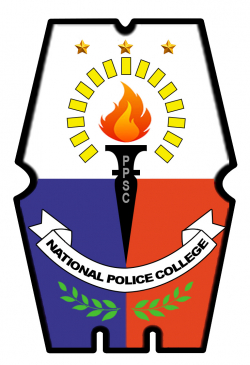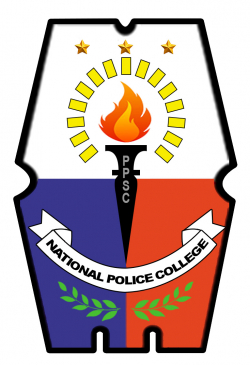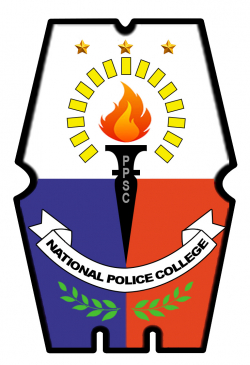“Dismissal of Drug Cases Filed in Courts in Quezon Province"

Type
Thesis
Authors
PCPT LEONILO A ANCHETA, PCPT ROY M CUEVAS, PCPT DIANNE KHRISTINE E JANGALAY, PCPT GERRY G MALIPOL ( , PCPT JASON E. ROMUALDO, PCPT BRYAN T TACAZON, PCPT LINDLEY S TIBUC, PCPT ERIC L VELUZ, PCPT JOHN C VILLAFUERTE, and PCPT NICANOR F VILLAREAL )
Category
PSOAC
[ Browse Items ]
Abstract
INTRODUCTION
On July 1, 2016, the Philippine National Police focused on the anti-illegal drug campaign “Double Barrel”, a two-pronged approach in the drive against the worsening illegal drug situation in the country and the increasing number of drug personalities and their networks. It compromises two main components. Oplan Tokhang, the lower barrel approach, and Oplan HVT, the upper barrel approach aimed towards High-Value Targets. This was launched under the marching order of President Rodrigo Roa Duterte. The relentless campaign to wipe out illegal drugs brought by intensified police interventions effectively caused a decline in crime rates.
Despite the success of the anti-illegal drug campaign of the PNP, it is still being criticized because of issues of incompetence, corruption, and involvement in illegal drug of some PNP personnel. Among the grounds for the dismissal of the case were attributed to the following: procedural irregularities, planting of evidence/fabrication, chain of custody failure to attend court hearings, inconsistent, testimonies, failure of protection to present evidence/failure to prosecute, insufficiency of evidence, inadmissibility of evidence due to illegal warrant served, search and seizure. Hence, illicit drug trafficking continues to be a perennial problem wreaking havoc on the society.
The topic on the Common Grounds for the dismissal of drug cases files is not only the main concern of a certain place but the concern of the country in general. The problem illegal drugs has become the top priority of the Philippine government as it becomes the threat to the Philippine economic and social progress. Drug cases have taken over Philippine courts over the last 9 years and only 12% of the 289,295 drug cases at the lower courts were disposed of in 2017. A big problem that courts just can’t keep up. Prosecution success rate for drug cases remains one of the lowest. In 2016, it had a prosecution success rate of 50.2% and in 2017, it improved slightly to 52.5%.
There are around 2,600 regional trial courts tasked to handle 289,295 drug cases alone Under the Dangerous Drugs Act, trial of a drugs-related case has to be finished not later than 60 days from the filing of information.
Republic act 9165 or the Dangerous Drugs Act is the blueprint of the Philippine government against illegal drugs. The law declared that “the government shall pursue an intensive and unrelenting campaign against the trafficking and use of dangerous drugs and other similar substances.” It also mandated the division of labor among government agencies.
According to the Dangerous Drugs Board (DDB) the government agency mandated to formulate policies on illegal drugs in the Philippines), there are 1.8 million current drug users in the Philippines, and 4.8 million Filipinos report having used illegal drugs at least once in their lives. More than three-quarters of drug users are adults (91%), males (87%), and have reached high school (80%). More than two-thirds (67%) are employed. The most commonly used drug in the Philippines is a variant of methamphetamine called shabu or “poor man’s cocaine.” According to a 2012 United Nations report, the Philippines had the highest rate of methamphetamine abuse among countries in East Asia; about 2.2% of Filipinos between the ages 16-64 years were methamphetamines users.
When Philippine President Rodrigo R. Duterte assumed office on June 30, 2016, his government launched an unprecedented campaign against illegal drugs. He promised to solve the illegal drug problem in the country, which, according to him, was wreaking havoc on the lives of many Filipino families and destroying the future of the Filipino youth. He declared a “war on drugs” targeting users, peddlers, producers and suppliers, and called for the Philippine criminal justice system to put an end to the drug menace.
During the first six months of the Duterte Presidency (July 2016-January 2017), the PNP conducted 43,594 operations that covered 5.6 million houses, resulting in the arrest of 53, 025 “drug personalities,” and a reported 1, 189, 462 persons “surrendering” to authorities, including 79,349 drug dealers and 1, 110, 113 drug users. Government figures show that during the first six months of Duterte’s presidency, more than 7, 000 individuals accused of drug dealing or drug use were filled in the Philippines, both from legitimate police operations and vigilante groups.
The Department of Justice prosecutor’s office have filed a total of 19 murder and homicide cases arising from the government’s ongoing war on drugs. Of the 19 cases filed in court, 13 are deaths from legitimate police operations, anad 6 are deaths outside legitimate police operations or those carried out by vigilante groups.
From July 1, 2016 to August 22, 2017, all prosecutors’ offices in the country handled a total of 71 murder and homicide cases related to the war on drugs according to data released by the DOJ.
According to the records of the National Prosecution Service (NPS) under the DOJ, the number of drug cases that prosecutors have filed in court shot up from 2009 to 2017. As seen from the chart, there were only 7, 675 drug-related cases filed in court in 2009, way behind cases, theft, and bouncing checks.
But over the next year, drug cases took over the crimes so drastically that by 2017, they increased to 70, 706 cases, with bouncing checks a far second at 21, 760.
Quezon Province is located in the CALABARZON Region. It is bounded on a north by the province of Aurora, on the west by the provinces of Laguna and Rizal, on the southwest by the province of Batangas and on the southeast by Camarines Norte and Camarines Sur. Tiaong, its first municipality
On July 1, 2016, the Philippine National Police focused on the anti-illegal drug campaign “Double Barrel”, a two-pronged approach in the drive against the worsening illegal drug situation in the country and the increasing number of drug personalities and their networks. It compromises two main components. Oplan Tokhang, the lower barrel approach, and Oplan HVT, the upper barrel approach aimed towards High-Value Targets. This was launched under the marching order of President Rodrigo Roa Duterte. The relentless campaign to wipe out illegal drugs brought by intensified police interventions effectively caused a decline in crime rates.
Despite the success of the anti-illegal drug campaign of the PNP, it is still being criticized because of issues of incompetence, corruption, and involvement in illegal drug of some PNP personnel. Among the grounds for the dismissal of the case were attributed to the following: procedural irregularities, planting of evidence/fabrication, chain of custody failure to attend court hearings, inconsistent, testimonies, failure of protection to present evidence/failure to prosecute, insufficiency of evidence, inadmissibility of evidence due to illegal warrant served, search and seizure. Hence, illicit drug trafficking continues to be a perennial problem wreaking havoc on the society.
The topic on the Common Grounds for the dismissal of drug cases files is not only the main concern of a certain place but the concern of the country in general. The problem illegal drugs has become the top priority of the Philippine government as it becomes the threat to the Philippine economic and social progress. Drug cases have taken over Philippine courts over the last 9 years and only 12% of the 289,295 drug cases at the lower courts were disposed of in 2017. A big problem that courts just can’t keep up. Prosecution success rate for drug cases remains one of the lowest. In 2016, it had a prosecution success rate of 50.2% and in 2017, it improved slightly to 52.5%.
There are around 2,600 regional trial courts tasked to handle 289,295 drug cases alone Under the Dangerous Drugs Act, trial of a drugs-related case has to be finished not later than 60 days from the filing of information.
Republic act 9165 or the Dangerous Drugs Act is the blueprint of the Philippine government against illegal drugs. The law declared that “the government shall pursue an intensive and unrelenting campaign against the trafficking and use of dangerous drugs and other similar substances.” It also mandated the division of labor among government agencies.
According to the Dangerous Drugs Board (DDB) the government agency mandated to formulate policies on illegal drugs in the Philippines), there are 1.8 million current drug users in the Philippines, and 4.8 million Filipinos report having used illegal drugs at least once in their lives. More than three-quarters of drug users are adults (91%), males (87%), and have reached high school (80%). More than two-thirds (67%) are employed. The most commonly used drug in the Philippines is a variant of methamphetamine called shabu or “poor man’s cocaine.” According to a 2012 United Nations report, the Philippines had the highest rate of methamphetamine abuse among countries in East Asia; about 2.2% of Filipinos between the ages 16-64 years were methamphetamines users.
When Philippine President Rodrigo R. Duterte assumed office on June 30, 2016, his government launched an unprecedented campaign against illegal drugs. He promised to solve the illegal drug problem in the country, which, according to him, was wreaking havoc on the lives of many Filipino families and destroying the future of the Filipino youth. He declared a “war on drugs” targeting users, peddlers, producers and suppliers, and called for the Philippine criminal justice system to put an end to the drug menace.
During the first six months of the Duterte Presidency (July 2016-January 2017), the PNP conducted 43,594 operations that covered 5.6 million houses, resulting in the arrest of 53, 025 “drug personalities,” and a reported 1, 189, 462 persons “surrendering” to authorities, including 79,349 drug dealers and 1, 110, 113 drug users. Government figures show that during the first six months of Duterte’s presidency, more than 7, 000 individuals accused of drug dealing or drug use were filled in the Philippines, both from legitimate police operations and vigilante groups.
The Department of Justice prosecutor’s office have filed a total of 19 murder and homicide cases arising from the government’s ongoing war on drugs. Of the 19 cases filed in court, 13 are deaths from legitimate police operations, anad 6 are deaths outside legitimate police operations or those carried out by vigilante groups.
From July 1, 2016 to August 22, 2017, all prosecutors’ offices in the country handled a total of 71 murder and homicide cases related to the war on drugs according to data released by the DOJ.
According to the records of the National Prosecution Service (NPS) under the DOJ, the number of drug cases that prosecutors have filed in court shot up from 2009 to 2017. As seen from the chart, there were only 7, 675 drug-related cases filed in court in 2009, way behind cases, theft, and bouncing checks.
But over the next year, drug cases took over the crimes so drastically that by 2017, they increased to 70, 706 cases, with bouncing checks a far second at 21, 760.
Quezon Province is located in the CALABARZON Region. It is bounded on a north by the province of Aurora, on the west by the provinces of Laguna and Rizal, on the southwest by the province of Batangas and on the southeast by Camarines Norte and Camarines Sur. Tiaong, its first municipality
Number of Copies
1
| Library | Accession No | Call No | Copy No | Edition | Location | Availability |
|---|---|---|---|---|---|---|
| NPC Library | 676556 | 1 | Yes |




